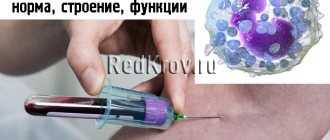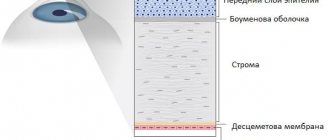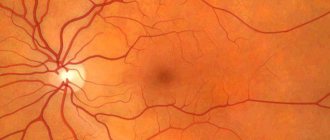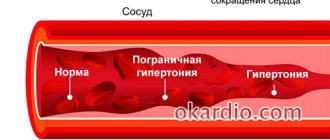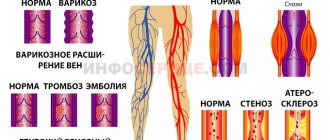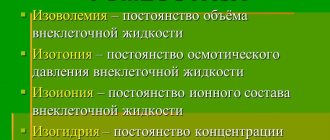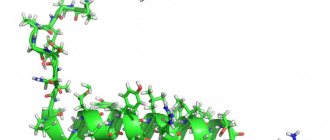Understanding ECG Data
For those who want to know how to decipher an ECG on their own, first of all, let’s say: data on the work of the myocardium is reflected on the electrocardiogram and has the form of alternating teeth and flatter intervals and segments. The teeth located on the isoelectric line resemble a curve with bends up and down. They are designated by the letters P, R, S, Q, T and are written between the T and P waves in the resting stage by a line of a horizontal segment. When deciphering the ECG of the heart, a norm is drawn between TP or TQ, which determines the width, intervals and amplitude of fluctuations in the length of the teeth.
Indicators of a normal cardiogram
Knowing how to decipher the ECG of the heart, it is important to interpret the results of the studies, adhering to a certain sequence. You need to pay attention first to:
- Myocardial rhythm.
- Electric axis.
- Conductivity of intervals.
- T wave and ST segments.
- Analysis of QRS complexes.
Interpretation of the ECG in order to determine the norm is reduced to data on the position of the teeth. The normal ECG in adults for heart rhythms is determined by the duration of the RR intervals, i.e. the distance between the tallest teeth. The difference between them should not exceed 10%. A slow rhythm indicates bradycardia, and a rapid rhythm indicates tachycardia. The norm of pulsations is 60-80.
Based on the P-QRS-T intervals located between the teeth, the passage of the impulse through the cardiac sections is judged. As the ECG results will show, the normal interval is 3-5 squares or 120-200 ms.
In ECG data, the PQ interval reflects the penetration of biopotential into the ventricles through the ventricular node directly to the atrium.
The QRS complex on the ECG demonstrates ventricular excitation. To determine it, you need to measure the width of the complex between the Q and S waves. A width of 60-100 ms is considered normal.
The norm when deciphering an ECG of the heart is considered to be the severity of the Q wave, which should not be deeper than 3 mm and last less than 0.04.
The QT interval indicates the duration of ventricular contraction. The norm here is 390-450 ms, a longer interval indicates ischemia, myocarditis, atherosclerosis or rheumatism, and a shorter interval indicates hypercalcemia.
When deciphering the ECG norm, the electrical axis of the myocardium will show areas of impulse conduction disturbance, the results of which are calculated automatically. To do this, the height of the teeth is monitored:
- The S wave should normally not exceed the R wave.
- If there is a deviation to the right in the first lead, when the S wave is below the R wave, this indicates that there are deviations in the functioning of the right ventricle.
- A reverse deviation to the left (the S wave exceeds the R wave) indicates left ventricular hypertrophy.
The QRS complex will tell you about the passage of biopotential through the myocardium and septum. A normal ECG of the heart will be in the case when the Q wave is either absent or does not exceed 20-40 ms in width and a third of the R wave in depth.
The ST segment should be measured between the end of the S wave and the beginning of the T wave. Its duration is affected by the pulse rate. Based on the ECG results, the normal segment occurs in the following cases: ST depression on the ECG with permissible deviations from the isoline of 0.5 mm and elevation in leads of no more than 1 mm.
Reading the teeth
- The P wave is normally positive in leads I and II, and negative in VR with a width of 120 ms. It shows how the biopotential is distributed throughout the atria. Negative T in I and II indicates signs of ventricular hypertrophy, ischemia or infarction.
- The Q wave reflects excitation of the left part of the septum. Its norm: a quarter of the R wave and 0.3 s. Exceeding the norm indicates necrotic heart pathology.
- The R wave shows the activity of the ventricular walls. Normally, it is recorded in all leads, but a different picture indicates ventricular hypertrophy.
- The S wave on the ECG demonstrates excitation of the basal layers and septa of the ventricles. Normally it is 20 mm. It is important to pay attention to the ST segment, which determines the condition of the myocardium. If the position of the segment fluctuates, this indicates myocardial ischemia.
- The T wave in leads I and II is directed upward, and in leads VR it is only negative. A change in the T wave on the ECG indicates the following: a high and sharp T wave indicates hyperkalemia, and a long and flat T wave indicates hypokalemia.
Classification
Clinical classification Depending on the location, they distinguish: - Sinus tachycardia - Atrial tachycardia - Atrioventricular tachycardia
Depending on the mechanism of occurrence of arrhythmia, the following are distinguished: - Re-entry - the phenomenon of repeated entry of an excitation wave a. Micro re-entry b. Macro re-entry - Focal arrhythmia: 1. Abnormal automaticity a. increased normal automaticity b. abnormal automaticity 2. Trigger activity a. early afterdepolarization b. late post-depolarization
Depending on the course, they are distinguished: - Paroxysmal - Non-paroxysmal
Why can ECG readings vary from one patient to another?
A patient's ECG data can sometimes be different, so if you know how to read a cardiac ECG but see different results in the same patient, don't make a diagnosis prematurely. Accurate results will require taking into account various factors:
- Often distortions are caused by technical defects, for example, inaccurate gluing of the cardiogram.
- Confusion can be caused by Roman numerals, which are the same in the normal and inverted directions.
- Sometimes problems arise as a result of cutting the diagram and losing the first P wave or the last T wave.
- Preliminary preparation for the procedure is also important.
- Electrical appliances operating nearby affect the alternating current in the network, and this is reflected in the repetition of the teeth.
- The instability of the zero line may be affected by the patient’s uncomfortable position or anxiety during the session.
- Sometimes the electrodes become dislodged or incorrectly positioned.
Therefore, the most accurate measurements are obtained using a multichannel electrocardiograph.
It is with them that you can test your knowledge of how to decipher an ECG yourself, without fear of making a mistake in making a diagnosis (treatment, of course, can only be prescribed by a doctor).
Ensuring normal cardiac activity is the task of harmonious and coordinated work of different parts and structures of the heart. The conduction system of the heart consists of the sinus (sinoatrial) node, the atrioventricular node and the bundle of His. The sinoatrial node sets the main heart rhythm. There are pathological situations when it loses its functionality, and then the AV node takes over its role.
Not only the sinus node, but also the atrioventricular node can lose its automaticity. The pacemaker becomes an automatic center of the third order, located in the ventricles of the heart. The location of the ectopic focus is possible in one of the branches of the His bundle or in their branches. In this article we will look in more detail at what diseases can lead to this phenomenon, as well as how to identify this pathology and cope with it.
The essence of the phenomenon
The transmission of nerve impulses to the heart of every healthy person occurs through the conduction system. The main generator of these impulses is the right atrium appendage, where the sinus node is located. Further, the path lies through the Purkinje fibers and the His bundle, through which the nerve impulse enters the fibers of the ventricles.
Conduction system of the heart
Despite the fact that such propagation of impulses ensures satisfactory functioning of the heart, there are conditions in which this becomes difficult. Various pathological processes in the body lead to the fact that the sinus node cannot cope with the initiation of excitation. Then the process of triggering impulses in the heart changes significantly.
The work of the heart, as the main muscle of the human body, must be preserved, and for this, rhythms arise that compensate for the weakened focus. These rhythms are called ectopic. The medical term “ectopia” translated from Greek means “displacement, change in the place of habitual residence.”
To determine where the nerve impulses come from and which area of the myocardium is currently triggering the heart rhythm, it is necessary to record an ECG. The ratio of the R waves to the ventricular QRS complexes determines how excitation moves through the atria.
Below are electrocardiographic criteria for different heart rate variations:
- Sinus. With it, characteristic H waves appear above the isoline in standard lead II before each QRS; all P waves are present in each lead, they are constant and do not differ in shape. All subsequent variants are non-sinus and, accordingly, represent a deviation from the norm.
Atrial. It comes from the underlying sections of the atria and is characterized by P waves located under the isoline and running in front of the entire ventricular complex; Each P is followed by a constant QRS complex.- Atrioventricular. The usual P waves do not appear on the ECG; they can join the unchanged QRS or be under the isoline, following the normal QRS complexes.
- Idioventricular rhythm. This is an extrasystolic rhythm from the ventricles. It is characterized by slow (less than 40 beats per minute) contraction of the ventricles; The electrocardiogram shows a widening of the QRS (more than 0.16 s) and deformation of the complexes; P waves occur regardless of the QRS complexes.
What is a borderline myocardial state?
Immediately after the examination, the Kardi.Ru system automatically analyzes the data obtained during the examination and returns you a report that contains:
- visual dispersion portrait of the heart;
- three main digital indicators, “Myocardium”, “Ri”;
- 9 additional digital indicators G1..G9;
- text recommendations.
Visual portrait of the heart
The first thing you need to pay attention to immediately after the examination is a visual portrait of the heart.
The right chambers of the heart (right atrium, right ventricle) are depicted on a blue background of the heart portrait. On a brown background, the left atrium is represented at the top, and the left ventricle of the heart is below. In normal condition, all cameras in the heart portrait are green. If there are any small deviations, the details of the portrait are marked in yellow. And pronounced deviations are highlighted in red.
Indicators Myocardium, Rhythm and Pulse
The next step in the analysis is the assessment of the indicators “Myocardium”, “Ri.
The “Myocardium” and “Rhythm” indices are relative characteristics that characterize the total value of dispersion deviations from the norm and vary in the range of 0% ... 100%. The higher the index value, the greater the deviation from the norm. Physically, the value “Myocardium” = 100% corresponds to a pathological complex associated with pronounced deviations from the norm in almost all chambers of the heart. The value “Myocardium” = 0% corresponds to the complete absence of any significant deviations from the dispersion model of an ideal heart. Similarly, the indicator “Rhythm” = 100% corresponds to the most pronounced changes in the regulation of heart rhythm, characteristic of severe arrhythmias or severe stress.
Myocardium is the main indicator that you need to pay attention to!
less than 15% – no significant deviations were identified. 15% . 19% – borderline state, monitoring of dynamics is advisable. With negative dynamics, i.e. with a slow increase in the indicator value, a mandatory consultation with a doctor is necessary. A borderline state can occur as a result of fatigue due to physical or mental overload, poor nutrition, exposure to alcohol, as well as metabolic changes caused by pathology of other organs. Therefore, persistent persistence of this condition requires consultation with a doctor. If the borderline state is caused by transient causes, then the indicator should gradually decrease, reflecting the process of functional normalization of the myocardium. 20% . 22% – probable pathology. If this deviation is detected for the first time, monitoring of the dynamics is necessary (increasing the frequency of examinations) and a medical examination is advisable. If the indicator steadily increases in this range, a medical examination is necessary. 23% 27% – probable pathology. If this deviation is detected for the first time, monitoring of dynamics and mandatory examination are necessary. more than 27% – pathology or severe pathology. If this deviation is detected for the first time, is persistently repeated and does not tend to increase in successive examinations, it is necessary to undergo examination at the first opportunity. If in the same situation there is a steady, rapid increase in deviations over a period of time measured in minutes or tens of minutes, an emergency consultation with a doctor is necessary.
The “Rhythm” index is a marker of the body’s adaptive capabilities or arrhythmia:
less than 15% – no significant deviations. 15%. 50% are small deviations (may be a variant of the norm in the process of natural daily fluctuations). 51%. 80% is a borderline state. More than 80% are pronounced deviations from the norm. This is a sign of depletion of compensatory reserves (asthenia) in the heart rhythm regulation system. A medical examination is required.
The “Pulse” indicator is provided for information only, because it is important for a doctor in case of need for medical consultation with a cardiologist. The normal limits of this indicator are indicated in green and depend on the age of the user.
Additional indicators
These indicators are not required for analysis. They are intended primarily for use by a doctor should medical advice be needed. The user, in accordance with the User's Guide, can view some of these indices only when monitoring the dynamics of the heart condition.
Additional indicators are displayed in the form of 9 indicators G1, G2, G3, G4, G5, G6, G7, G8. G9.
Indices G1, G2 characterize the atrial myocardium. Increased attention to these indices may be advisable in the presence of arrhythmia or pronounced changes in the electrical instability index. Indices G5, G6 refer to the ventricles. These indices almost always increase with significant pathological changes. However, transient changes are also possible, caused, for example, by dehydration of the body, high consumption of table salt in the diet. factor. G8 index gives a rough estimate of the average rate of ventricular excitation, and is also within the competence of the physician. If the G9 is persistently increased and has a value of 7 or more, it is advisable to consult a cardiologist. In many cases, this may be a harbinger of developing or already existing hypertrophy of one of the ventricles. Although in younger age groups, for example in children, this may be a natural physiological background due to growth processes. Likewise, if ventricular symmetry indices G7 and G3+G4 are persistently increased, this is a sign of possible pathological changes
Text recommendations
Immediately after the examination, you will receive a “General Conclusion” containing the value of the main index “Myocardium” and text recommendations that will indicate the “variant of the norm” or the recommendation to “consult a doctor.” If the system detects significant deviations, there will be a recommendation to “consult a doctor immediately.” In the following sections “Ri, etc. additional information is displayed that is of interest primarily to the doctor.
All your examinations are stored in the system, so it is easy to track the dynamics of changes in your heart condition. If there are pronounced deviations, it is most important to monitor the dynamics of changes in indicators. If there is a noticeable increase in indicators, you should immediately consult a doctor. Typically, such a recommendation is formed for the user in the “General Conclusion” and is highlighted in red.
Examples of real conclusions can be viewed in the demo personal account, open to all site guests.
Instructions in which you can learn more about the operation of a cardiovisor for your home can be found here.
www.kardi.ru
Signs
IVR can develop both with severe myocardial damage and without organic damage. Sometimes it is registered in a state of preagony, which requires urgent medical intervention. Being a replacement rhythm, it does not retain functionality for a long time. The following features are characteristic of IVR:
the heart rate drops to a critical level - below 40 beats per minute;- heart contractions are so weak that they do not ensure efficient functioning of the heart;
- A thread-like pulse is determined or there is no pulsation at all.
- the source of impulses can be several different parts of the ventricles, which leads to arrhythmia;
- in rare cases, impulses can exit the sinus node, but their rhythm is always slower than the ventricular one.
- the atria can contract irregularly, like fluttering and flickering.
When an electrocardiogram shows ectopic contraction of the ventricles and their frequency is 60-100 beats per minute, a diagnosis of accelerated IVR is made.
The doctor will differentiate IVR from ventricular and supraventricular tachycardia, stable or transient blockade of the His bundle or its branches, antidromic tachycardia in Wolff-Parkinson-White syndrome, and atrial fibrillation.
Drug treatment
- In case of severe hemodynamic disorders, electrical pulse therapy is administered at a dose of 0.5-1 J/kg.
- Stopping an attack of supraventricular tachycardia with stable hemodynamics begins with vagal techniques.
For young children, the cold test (diver effect) is most effective, for school-age children - the Valsalva test.
It is also possible to massage the carotid sinus (for school-age children) or analogues of the test - turning the child upside down (for young children).
Children and their parents should be taught the technique of vagal techniques.
Pressure on the eyeballs (Aschner-Danyini test) is NOT RECOMMENDED for use in children (risk of eye damage, retinal detachment).
- If vagal techniques are ineffective, drug relief begins with intravenous administration of ATP (in a stream, quickly, without dilution, starting from 0.1 mg/kg).
If tachycardia persists, then after 2 minutes the injection is repeated, and the dose should be increased to 0.3 mg/kg or to an adult dose of 6-12 mg.
Age dosage for intravenous ATP administration:
- up to 6 months – 0.5 ml;
- 6-12 months – 0.7 ml;
- 1-3 years – 0.8 ml;
- 4-7 years – 1 ml;
- 8-10 years - 1.5 ml;
- 11 years and over 2 ml;
- repeated administration - in a double dose.
Efficiency is 90-100%.
However, due to the short half-life (5-10 seconds), relapse of tachycardia is possible in up to 1/3 of cases.
Side effects of adenosine (ATP) are short-term: hypotension, bronchospasm, facial flushing, sinus bradycardia, sinus arrest, AV block.
- To relieve SVT, it is possible to use TES (transesophageal electrical stimulation of the heart).
- If, after repeated administration of ATP, supraventricular tachycardia persists, verapamil or procainamide is used to stop the attack.
VERAPAMIL is administered intravenously slowly at a dose of 0.1 mg/kg in 10-20 ml of 0.9% NaCl (not used in children of the first year of life, with WPW syndrome, together with or after the use of beta-blockers).
If tachycardia persists, use AMIODARONE intravenously at a dose of 5-10 mg/kg (up to 150 mg) in a 5% glucose solution for 30-60 minutes. Amiodarone is the drug of choice in children with reduced EF when the use of other antiarrhythmic drugs is undesirable due to negative inotropic effects.
Long-term antiarrhythmic therapy is justified:
- in children of the first year of life;
- in young children with frequent seizures, with clinical manifestations or with chronic SVT;
- in older children if it is impossible to perform or refuses RFA.
Antiarrhythmic therapy is recommended to begin in the hospital.
Rhythm control will delay the onset of arrhythmogenic myocardial dysfunction and allow you to wait for the recommended timing of RFA.
To prevent recurrent attacks of supraventricular tachycardia
- PROPAFENONE at a dose of 8-15 mg/kg/day in 3 divided doses,
- VERAPAMIL at a dose of 3-7 mg/kg/day in 2-3 doses,
- AMIODARONE at a maintenance dose of 5 mg/kg/day in 1-2 doses,
- SOTALOL 2-6 mg/kg/day in 2 divided doses.
To control the rhythm frequency in children with chronic supraventricular tachycardia, digoxin and beta-blockers are also used.
Provoking factors and prognosis
Malfunction of the sinoatrial node caused by various reasons leads to the formation of IVR. The functioning of the sinus node is affected by the following diseases and acute conditions:
- myocarditis is an inflammatory process that affects the heart muscle;
- cardiac ischemia, leading to oxygen starvation of healthy myocardial fibers;
- autonomic dysfunctions and dysregulation;
- cardiosclerosis – diffuse or formed as a result of a heart attack;
- imbalance of hormones in the body;
- impaired functioning of the adrenal glands or thyroid gland;
- acute coronary syndrome in the form of myocardial infarction;
- cardiac tamponade - accumulation of fluid in the pericardium and compression of the cavities of the heart;
- significant blood loss, especially with ongoing bleeding.
The attending physician can determine the prognosis by taking into account the disease that led to the ventricular rhythm, the symptoms and the general condition of the patient. The prognosis will be favorable if IVR is the only pathology and does not lead to other disorders of the heart. Late diagnosis and treatment that does not compensate for the severity of the condition significantly reduces the chances of a good outcome of the disease.
What is cardiography
The essence of cardiography is the study of electrical currents arising during the work of the heart muscle.
The advantage of this method is its relative simplicity and accessibility. Strictly speaking, a cardiogram is the result of measuring the electrical parameters of the heart, displayed in the form of a time graph. The creation of electrocardiography in its modern form is associated with the name of the Dutch physiologist of the early 20th century, Willem Einthoven, who developed the basic ECG methods and terminology used by doctors to this day.
Thanks to the cardiogram, it is possible to obtain the following information about the heart muscle:
- Heart rate,
- Physical condition of the heart
- The presence of arrhythmias,
- The presence of acute or chronic myocardial damage,
- The presence of metabolic disorders in the heart muscle,
- Presence of electrical conductivity disturbances,
- Position of the electrical axis of the heart.
Also, a cardiac electrocardiogram can be used to obtain information about certain vascular diseases not related to the heart.
An ECG is usually performed in the following cases:
- Feeling of abnormal heartbeat;
- Attacks of shortness of breath, sudden weakness, fainting;
- Heartache;
- Heart murmurs;
- Deterioration of the condition of patients with cardiovascular diseases;
- Passing medical examinations;
- Medical examination of people over 45 years of age;
- Examination before surgery.
An electrocardiogram is also recommended for:
- Pregnancy;
- Endocrine pathologies;
- Nervous diseases;
- Changes in blood counts, especially with an increase in cholesterol;
- Over 40 years of age (once a year).
Diagnostics
The main method for determining a change in rhythm towards pathology is an electrocardiogram. Idioventricular rhythm is spoken of when the following signs appear on the ECG:
- Expansion (more than 0.12 s) and deformation of the ventricular QRS complexes, which is also observed during blockade of the His bundle and its branches.
Reducing the frequency of RR intervals to 30-40 per minute, because the ventricles are not able to contract with a greater amplitude.- Loss of P waves, which usually should be located above the isoline and recorded before the new ventricular complex.
- Unrelated and uncoordinated contraction of the atria and ventricles.
To clarify the diagnosis and rationally select therapy, the attending physician may need to prescribe additional examinations. The most commonly used are EchoCG and 24-hour Holter monitoring. In difficult cases, transesophageal ECG or echocardiography is used for diagnostic purposes.
Therapy methods
The patient may not complain of interruptions in the heart and may not feel any discomfort, but the ventricular rhythm detected in him requires medical supervision. In the absence of a clearly manifested clinical picture, specific treatment is not indicated. IVR therapy is aimed at strengthening the heart muscle.
Drugs used to eliminate IVR:
- begin therapy by taking sedatives: Corvalol, Validol;
- for a single extrasystole, adaptogens are effective: Eleutherococcus, Ginseng;
beta blockers (Nebivolol, Bisoprol) help normalize the pulse during tachycardia;- if the pulse is below 50 beats per minute, Atropine is suitable (used only as prescribed by a doctor);
- eliminate heart rhythm disturbances with antiarrhythmic drugs (Amiodarone);
- when the ECG shows a frequent idioventricular rhythm, as well as tachycardia or atrial flutter, it is necessary to act quickly. Emergency care consists of intravenous administration of a 4% potassium chloride solution;
- in severe cases, installation of a pacemaker is indicated.
It is important to take medications as prescribed by a doctor and under the control of your health condition. Patients with a pacemaker should be regularly examined by a cardiologist to evaluate the performance of the device.
Idioventricular rhythm is not the most serious pathology, but requires attention from the patient. At the slightest sign of illness, you should consult a doctor and, if necessary, undergo an examination. This will significantly increase the chances of recovery and improve the quality of life.
Electrocardiography is a method of measuring potential differences arising under the influence of electrical impulses of the heart. The result of the study is presented in the form of an electrocardiogram (ECG), which reflects the phases of the cardiac cycle and the dynamics of the heart.
After the myocardium contracts, the impulses continue to travel throughout the body as an electrical charge, resulting in a potential difference - a measurable value that can be determined using the electrocardiograph electrodes.
Features of the procedure
In the process of recording an electrocardiogram, leads are used - electrodes are placed according to a special scheme. To fully display the electrical potential in all parts of the heart (anterior, posterior and lateral walls, interventricular septa), 12 leads are used (three standard, three reinforced and six chest), in which electrodes are located on the arms, legs and certain areas of the chest.
During the procedure, electrodes record the strength and direction of electrical impulses, and the recording device records the resulting electromagnetic oscillations in the form of teeth and a straight line on special paper for recording ECG at a certain speed (50, 25 or 100 mm per second).
Paper registration tape uses two axes. The horizontal X axis shows time and is indicated in millimeters. Using a time period on graph paper, you can track the duration of the processes of relaxation (diastole) and contraction (systole) of all parts of the myocardium.
The vertical Y axis is an indicator of the strength of the impulses and is indicated in millivolts - mV (1 small box = 0.1 mV). By measuring the difference in electrical potentials, pathologies of the heart muscle are determined.
The ECG also shows leads, each of which alternately records the work of the heart: standard I, II, III, thoracic V1-V6 and enhanced standard aVR, aVL, aVF.
ECG indicators
The main indicators of the electrocardiogram characterizing the work of the myocardium are waves, segments and intervals.
Serrations are all sharp and rounded bumps written along the vertical Y axis, which can be positive (upward), negative (downward), or biphasic. There are five main waves that are necessarily present on the ECG graph:
- P – recorded after the occurrence of an impulse in the sinus node and sequential contraction of the right and left atria;
- Q – recorded when an impulse appears from the interventricular septum;
- R, S – characterize ventricular contractions;
- T - indicates the process of relaxation of the ventricles.
Segments are areas with straight lines, indicating the time of tension or relaxation of the ventricles. There are two main segments in the electrocardiogram:
- PQ – duration of ventricular excitation;
- ST – relaxation time.
An interval is a section of an electrocardiogram consisting of a wave and a segment. When studying the PQ, ST, QT intervals, the time of propagation of excitation in each atrium, in the left and right ventricles is taken into account.
Possible complications
Hypertrophy triggers a whole chain of pathological reactions of the body that threaten human life:
- Against the background of HLP, dilatation of the chamber cavity occurs with an increase in blood volume.
- This provokes stagnation in the pulmonary circulation, pulmonary hypertension.
- This, in turn, disrupts the functioning of the right side of the heart.
- Further insufficiency of the systemic circulation develops.
In the absence of timely treatment, all this ends in chronic heart failure with a fatal outcome.
Already at the stage of expansion of the left atrium, a person experiences a number of symptoms: shortness of breath both after exercise and without it, pain in the heart area, frequent pressure changes, angina pectoris.
Swelling of the extremities should also be a concern. In advanced cases, the patient’s breathing can be heard whistling even at a distance; it is difficult for him to perform daily work and take care of himself.
ECG norm in adults (table)
Using a table of norms, you can conduct a sequential analysis of the height, intensity, shape and length of the teeth, intervals and segments to identify possible deviations. Due to the fact that the passing impulse spreads unevenly throughout the myocardium (due to the different thickness and size of the heart chambers), the main normal parameters of each element of the cardiogram are identified.
| Indicators | Norm |
| Prongs | |
| P | Always positive in leads I, II, aVF, negative in aVR, and biphasic in V1. Width - up to 0.12 sec, height - up to 0.25 mV (up to 2.5 mm), but in lead II the wave duration should be no more than 0.1 sec |
| Q | Q is always negative and is normally absent in leads III, aVF, V1 and V2. Duration up to 0.03 sec. Height Q: in leads I and II no more than 15% of the P wave, in III no more than 25% |
| R | Height from 1 to 24 mm |
| S | Negative. Deepest in lead V1, gradually decreases from V2 to V5, may be absent in V6 |
| T | Always positive in leads I, II, aVL, aVF, V3-V6. Always negative in aVR |
| U | Sometimes it is recorded on the cardiogram 0.04 seconds after T. The absence of U is not a pathology |
| Interval | |
| PQ | 0.12-0.20 sec |
| Complex | |
| QRS | 0.06 - 0.008 sec |
| Segment | |
| ST | In leads V1, V2, V3, it shifts upward by 2 mm |
Based on the information obtained from deciphering the ECG, conclusions can be drawn about the characteristics of the heart muscle:
- normal functioning of the sinus node;
- functioning of the conduction system;
- frequency and rhythm of heart contractions;
- the state of the myocardium – blood circulation, thickness in different areas.
How is the cardiogram automatically deciphered?
The process of automated ECG interpretation includes many graphical transformations and calculations, but it is fundamentally similar to manual, expert analysis of the electrical activity of the heart. The computer program includes a database, which is formed from graphic images of cardiographic curves and corresponding expert opinions on the state of the heart. Based on the analysis of the parameters of the cardiogram received from a new patient, the machine identifies a set of signs and, comparing them with existing samples in the database, makes a preliminary conclusion.
The machine calls an ECG borderline if one or more of the heart parameters calculated from it does not fall within the normal range, but at the same time does not correspond to any of the types of pathological curve available in the machine’s memory.
If the machine answered the question whether the patient had a disease or changes in the functioning of the heart, then the ECG characteristic “pathological” corresponded to the answer “yes”, “normal” - “no”, “borderline” - “I don’t know”.
ECG interpretation algorithm
There is a scheme for deciphering an ECG with a sequential study of the main aspects of heart function:
- sinus rhythm;
- Heart rate;
- rhythm regularity;
- conductivity;
- EOS;
- analysis of teeth and intervals.
Sinus rhythm is a uniform heartbeat rhythm caused by the appearance of an impulse in the AV node with gradual contraction of the myocardium. The presence of sinus rhythm is determined by deciphering the ECG using P wave indicators.
Also in the heart there are additional sources of excitation that regulate the heartbeat when the AV node is disturbed. Non-sinus rhythms appear on the ECG as follows:
- Atrial rhythm - P waves are below the baseline;
- AV rhythm – P is absent on the electrocardiogram or comes after the QRS complex;
- Ventricular rhythm - in the ECG there is no pattern between the P wave and the QRS complex, while the heart rate does not reach 40 beats per minute.
When the occurrence of an electrical impulse is regulated by non-sinus rhythms, the following pathologies are diagnosed:
- Extrasystole is premature contraction of the ventricles or atria. If an extraordinary P wave appears on the ECG, as well as when the polarity is deformed or changed, atrial extrasystole is diagnosed. With nodal extrasystole, P is directed downward, absent, or located between QRS and T.
- Paroxysmal tachycardia (140-250 beats per minute) on the ECG can be presented in the form of an overlay of the P wave on the T wave, standing behind the QRS complex in standard leads II and III, as well as in the form of an extended QRS.
- Flutter (200-400 beats per minute) of the ventricles is characterized by high waves with difficult to distinguish elements, and with atrial flutter, only the QRS complex is distinguished, and sawtooth waves are present in place of the P wave.
- Flicker (350-700 beats per minute) on the ECG is expressed in the form of inhomogeneous waves.
Heart rate
The interpretation of the ECG of the heart must contain heart rate indicators and is recorded on tape. To determine the indicator, you can use special formulas depending on the recording speed:
- at a speed of 50 millimeters per second: 600/ (number of large squares in the RR interval);
- at a speed of 25 mm per second: 300/ (number of large squares between RR),
Also, the numerical indicator of the heartbeat can be determined by the small cells of the RR interval, if the ECG tape was recorded at a speed of 50 mm/s:
- 3000/number of small cells.
The normal heart rate for an adult is between 60 and 80 beats per minute.
Regularity of rhythm
Normally, the RR intervals are the same, but an increase or decrease of no more than 10% from the average value is allowed. Changes in the regularity of the rhythm and increased/decreased heart rate can occur as a result of disturbances in automatism, excitability, conductivity, and contractility of the myocardium.
When the automatic function is impaired, the following interval indicators are observed in the heart muscle:
- tachycardia - heart rate is in the range of 85-140 beats per minute, a short period of relaxation (TP interval) and a short RR interval;
- bradycardia - heart rate decreases to 40-60 beats per minute, and the distances between RR and TP increase;
- arrhythmia – different distances are tracked between the main heartbeat intervals.
Conductivity
To quickly transmit an impulse from the source of excitation to all parts of the heart, there is a special conduction system (SA and AV nodes, as well as the His bundle), the violation of which is called blockade.
There are three main types of blockades - sinus, intraatrial and atrioventricular.
With sinus block, the ECG shows a violation of impulse transmission to the atria in the form of periodic loss of PQRST cycles, while the distance between RRs increases significantly.
Intraatrial block is expressed as a long P wave (more than 0.11 s).
Atrioventricular block is divided into several degrees:
- I degree – prolongation of the PQ interval by more than 0.20 s;
- II degree - periodic loss of QRST with an uneven change in time between complexes;
- III degree - the ventricles and atria contract independently of each other, as a result of which there is no connection between P and QRST in the cardiogram.
Electric axis
EOS displays the sequence of impulse transmission through the myocardium and normally can be horizontal, vertical and intermediate. In ECG interpretation, the electrical axis of the heart is determined by the location of the QRS complex in two leads - aVL and aVF.
In some cases, axis deviation occurs, which in itself is not a disease and occurs due to an enlargement of the left ventricle, but, at the same time, may indicate the development of pathologies of the heart muscle. As a rule, the EOS deviates to the left due to:
- ischemic syndrome;
- pathology of the valve apparatus of the left ventricle;
- arterial hypertension.
A tilt of the axis to the right is observed with enlargement of the right ventricle with the development of the following diseases:
- pulmonary stenosis;
- bronchitis;
- asthma;
- pathology of the tricuspid valve;
- congenital defect.
Holter ECG monitoring - what is it and how is it done?
Application and effectiveness
Have you been struggling with HYPERTENSION for many years without success?
Head of the Institute: “You will be amazed at how easy it is to cure hypertension by taking it every day...
Read more "
The need for Holter monitoring was dictated by frequent situations when the patient experienced heart problems during the day at rest or after physical activity, or any events, but a standard ECG recording made after some time did not reveal any abnormalities.
The 24-hour Holter ECG monitoring system allows:
- Assess the functional activity of the myocardium, its rhythm and conductivity in conditions of a usual lifestyle, emotional and physical activity.
- Assess the state of the heart at rest, during sleep.
- Determine the presence of cardiac rhythm disturbances, record their cyclic changes, the number of repeating episodes during monitoring, duration, intensity, nature (ventricular, supraventricular) and conditions for the occurrence of arrhythmia. It is important that daily registration of extrasystoles (untimely heartbeats) reveals whether their number is within normal limits or not.
- Identify the form of angina (stable, unstable), including asymptomatic (painless) myocardial ischemia. The method determines the number and duration of episodes, as well as the conditions, load threshold and pulse rate under which ischemia develops. If there is pain in the heart area, the cause of its occurrence is identified (lack of blood supply, osteochondrosis, neuralgia).
- Trace the connection between the patient’s subjective sensations and the objective readings of the device.
- Make an accurate diagnosis, prescribe adequate treatment and monitor the effectiveness of medications taken by the patient.
- Assess changes in heart function in the presence of a pacemaker.
Difference from conventional electrocardiography and echocardiography
The methods of standard ECG, echocardiography and Holter monitoring were invented with the sole purpose of identifying pathologies in the myocardium. However, significant differences in methods determine the advisability of their implementation in certain cases.
Standard electrocardiography reveals rhythm disturbances (tachyarrhythmia, bradyarrhythmia, atrial fibrillation), cardiac muscle nutrition (coronary disease) and conduction of electrical impulses (blockade), but only at the time of examination (data recording).
For example, an attack of arrhythmia that occurred earlier will not be detected on an ECG recording an hour later. Also, pathologies that are not accompanied by electrical impulses (low-grade valve defects) will not be recorded.
Holter monitoring, in contrast to the standard ECG, is a more reliable and informative method with a large number of analyzed parameters.
Registration of heart function is carried out throughout the day (if necessary, up to 7 days), so all unstable, transient disturbances are recorded on the device.
An undoubted advantage of the latest models of the device for Holter ECG monitoring is the presence of an additional function for monitoring daily BP (blood pressure).
Echocardiography differs significantly from these techniques. It allows you to see the heart on the screen of an ultrasound scanner and thus determine the size and thickness of the walls of the heart chambers, the speed of blood flow, the presence of blood clots in the cavities, the degree of atherosclerotic process, and also see the activity of the heart in real time.
Prescribed as a primary examination or after detecting changes in the electrocardiogram.
Indications for monitoring
A long-term study of the data recorded by the Holter device made it possible to determine when it is appropriate to use this method. This:
- Patient conditions that presumably indicate arrhythmia (dizziness of unknown etiology, fainting, rapid heartbeat, cardiac dysfunction).
- Detection of ECG changes, often complicated by arrhythmia (myocardial infarction, long QT syndrome).
- Conditions presumably indicating coronary artery disease (chest pain, difficulty breathing, especially after physical activity, psycho-emotional outburst), as well as diagnosis of asymptomatic cardiac ischemia.
- Monitoring the effectiveness of therapy - drug and surgical treatment of arrhythmia and coronary heart disease. Changes are assessed after the use of drugs, ablation of pathways, stenting and bypass surgery of the coronary arteries.
- Monitoring the operation of the pacemaker.
- Monitoring patients at risk of developing arrhythmia or coronary artery disease (with congenital and acquired heart pathologies, after myocardial infarction).
- Arterial hypertension with signs of cardiovascular failure.
- Circulatory failure II-III degree, renal failure.
- Preparation for surgery on the heart and other organs in people with myocardial pathologies.
Why do you feed pharmacies if hypertension is afraid of the usual like fire...
Tabakov has revealed a unique remedy against hypertension! To reduce blood pressure while preserving blood vessels, add to…
For more information about the technique and its advantages, watch the video:
Daily Holter technique
The Holter device is a portable recorder weighing less than 0.3 kg, attached to the patient's body with a special belt. After degreasing the skin with an alcohol solution, electrodes are attached to certain points of the chest area.
Recording is carried out over several channels (from 2 to 12), but the most common are 2 and 3 channel recorders. During the first examination, a 12-channel device is usually used, since it provides more information; for repeated monitoring, 3 channels are sufficient.
During the study, the patient is given a diary in which all activities, sleep time, medications taken, sensations, complaints, and well-being are noted hourly.
The doctor recommends certain physical activity (climbing stairs, brisk walking) to analyze the functioning of the heart during and after intense exercise.
Otherwise, the patient leads his usual lifestyle. After the time has passed, you must return to the clinic to remove the device.
Features of the examination, how to prepare
No special preparation is required for the examination. The exception is men with heavily hairy chests. To ensure a tight fit of the electrodes, you will need to shave your hair.
During monitoring there are no restrictions in the usual lifestyle and diet, but:
- You cannot take water treatments to avoid damage to the device;
- mechanical and thermal damage to the device must not be allowed;
- Do not stay near power lines;
- You should not allow stress with increased sweating, as this may cause the electrodes to come off.
Decoding the results
After removing the device, the recording data is entered by the doctor into a computer - decoder. The digital system analyzes the data, which is reviewed and corrected by the doctor, and then a conclusion is written based on it.
The standard transcript necessarily indicates information about the heart rate, ventricular and supraventricular extrasystoles (rhythm disturbances), rhythm pauses, changes in the PQ and QT intervals. The identified pathologies are illustrated with electrocardiogram printouts for the monitoring period.
Decryption time takes about 2 hours. After reviewing the results, the attending physician will prescribe appropriate treatment.
The undeniable advantage of the method is the ability to carry out it in familiar home conditions and without interruption from work or study. An easy and painless examination using a Holter device provides an objective picture of the heart’s activity, which makes it easier to prescribe effective therapy.
